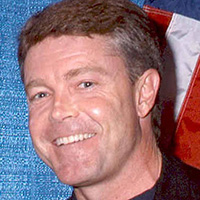In 1972, the then United States Olympic Committee (USOC), relocated its headquarters from New York City to Colorado Springs, Colorado. In the decades that followed, 25 amateur sports federations and training programs (each privately financed), also relocated their athletic training programs, athletes and training staff to Colorado Springs.
In 1978, a federal statute, the Ted Stevens Olympic and Amateur Sports act was enacted, creating a federally chartered nonprofit corporation, which does not receive federal government financial support (other than for a select set of Paralympic military programs). The renamed United States Olympic & Paralympic Committee received exclusive rights to use and to authorize the use of all Olympic-related images, marks and trademarks. The USPOC then licenses those rights to sponsors and selected manufacturers as their primary revenue source, along with television broadcast rights to telecast the Winter and Summer Olympic Games every four years, as well as related national and international trial competitions which precede each Olympic and Paralympic Games. The majority of other countries in the world, all of the Eastern Bloc and our major sports competitors are funded by their governments, in all or part, with gifted athletes often used as props or parts of propaganda campaigns between Olympic Games.
During those same late 60s and early 70s, the National Professional Soccer League and later the North American Soccer League, were attempting to launch a national professional soccer league across America. The Atlanta Chiefs were Georgia and the southeast's entry in that league, including a season in 1973 as the Atlanta Apollos. Metro Atlanta and Georgia more successfully launched soccer as an amateur youth sport at the time, which continues growing to this day. I played on YMCA and later AAA high school soccer teams from early elementary through my high-school years. Met many of the Atlanta Chiefs, attended a few of their player training camps and even met global soccer star Pele at an exhibition game. Those years of play instigated my soccer fandom which last through today.
Several other attempts at a national professional soccer league came and went, until the establishment of Major League Soccer (MLS) a 29 team league (26 in the U.S. and 3 in Canada). The MLS is a men's professional soccer league, sanctioned by the United States Soccer Federation, which is headquartered in Midtown Manhattan, not too far from the HQ of Major League Baseball and also the NFL. The league and MSL team owners operate under a shared revenue model, and all teams have a salary cap on their rosters.
Also continually fueling that fan base for the sport across the nation are many of those youth soccer players from earlier decades. Following that earlier example by the USOC, relocating from New York to Colorado Springs, the headquarters of the U.S. Soccer Federation (USSF) will be relocating from Chicago to Atlanta, thanks in large measure to a $50-million pledge and gift from Arthur Blank.
U.S. Soccer plans to construct the nation's first-ever purpose-built and designated National Training Center for soccer, to be utilized by all 27 of U.S. Soccer's National Teams, as well as additional facilities for U.S. Soccer's nine Extended National Teams (ENTs), including teams with athletes who have Cerebral Palsy, the Deaf and Power Soccer National Teams and including locker rooms and training facilities designed to maximize accessibility for those players.
In 2026, Atlanta and the Mercedes Benz Stadium will play host to the FIFA World Cup Soccer Championship. The World Cup has a larger fan base and typically draws more international visitors than an Olympic Games. Though foreign-born players, particularly from Latin America and Europe continue to fill the rosters of most MSL teams are often identified as the most skilled players, the U.S. has continually been upgrading the caliber of play and talent of our home-grown stock. The Atlanta United operates a farm team system and a second franchise, which frequently includes a higher percentage of native-born American players. These new state-of-the-art U.S.-based training facilities coming to Atlanta should only expand the number and depth of those American players.
The USSF HQ and training center will require a large swatch of land, leaning more towards a suburban or ex-urban site with interstate and quick airport access. The economic boon will later be measured in the hundreds of millions of dollars. And though I have personally been a soccer fan and player since about age 8, the entire state is about to get a big Kick out of this coming soccer wave heading for metro Atlanta and north Georgia. Play ball!









